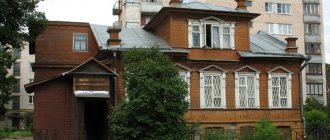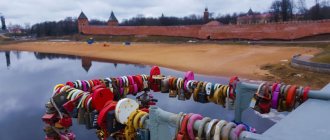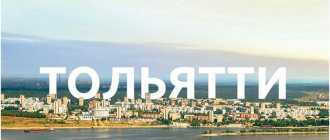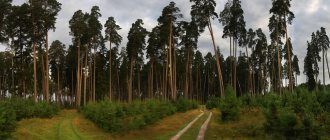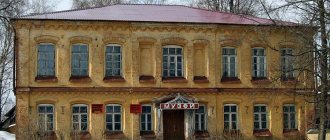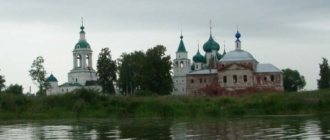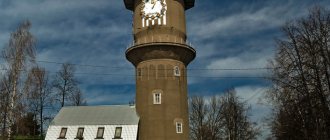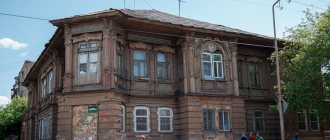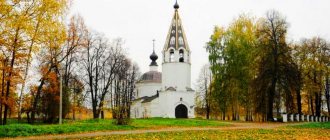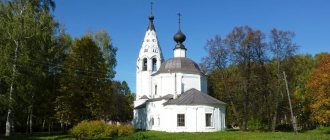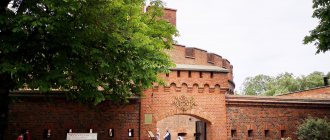The name of the city was given by the Luga River, and its name comes from the word laugas, which translates from Estonian as swamp. A Slavic settlement existed here already in the 10th century. During the reign of Catherine the Second, by her order, a city was built on Luga.
The poet Nadson, who visited Luga at the very beginning of the 19th century, gave a detailed description of the city. Alexander Sergeevich Pushkin stopped here several times on his way to his Pskov estate. He did not describe this town very flatteringly:
There is a city in Russia called Luga, in the St. Petersburg district. This little town wouldn’t be any worse if it weren’t for my Novorzhev in the world.
During the Great Patriotic War there were heavy battles here. The city was severely destroyed, but many houses miraculously survived.
Luga Museum of Local Lore
The museum, created in 1976, is located in a former merchant estate. The building miraculously survived the war and occupation. In the museum's exposition you can see collections of coins, a collection of old photographs, a huge amount of materials about the war of 1941-1945, and the stands display documents about the guests of the city: Rimsky-Korsakov, Ershov, Chaliapin.
Address: Red Artillery Street - 11A.
What to see in Luga in one day
Over the centuries of its existence, Luga has seen a lot: the luxury of noble life, the harsh morals of revolutionary times and bloody wars. All this left a special imprint on it and made it attractive in the eyes of travelers who love the secrets of the past and the spirit of antiquity. Among the countless attractions of Luga, objects that are in particular demand among tourists stand out. Such attention is completely deserved, because these places give the most complete picture of the values and culture of the city.
Museum of History and Local Lore
- Address: st. Red Artillery, 11A.
The Luga Museum of History and Local Lore was founded in August 1977. Its location was a former merchant estate, which is an architectural monument of the 19th century.
The central hall is dedicated to an exhibition dedicated to military topics. Much attention is paid here to the Luga border, partisan movements, underground resistance and the liberation of the city from fascist occupiers. The exhibition presents rare photographs and original documents testifying to the heroism and courage of Ludzhan residents during the war years.
The second largest and most important exhibition is called “Palaeontology in the Luga Region”. Its exhibits are the fossilized remains of creatures that lived during the Devonian period. These artifacts were discovered during paleontological excavations in the vicinity of the Luga River.
A small hall is dedicated to an exhibition demonstrating the natural wealth of Luga. In glass cases you can see recreated forest landscapes. The compositions are supplemented with plant samples, models of mushrooms and stuffed animals and birds.
The museum often organizes themed events, focusing on the work of local painters and folk craftsmen.
Small Luga Canyon
- Coordinates on the map: 58.824908, 29.986736.
Near the village of Ploskoye, on the Oredzh River, there is an unusually picturesque lake surrounded by a pine forest. A small canyon stretches along the coast, which appeared as a result of the washing out of limestone rock. The height of the canyon reaches three hundred meters - from this point a stream falls into the lake, too small for the proud name “waterfall”.
This corner of nature is famous for the purity of the virgin forest and fresh air, saturated with the resinous smell of pine. It is best to come here in the summer, because... In winter, ice and snowdrifts make it very difficult to get to the canyon.
Langina Mountain
- GPS coordinates: 58.715354, 29.842262.
Langina Mountain is famous for the fact that the second line of the Luga border passed through it. Today, a memorial complex dedicated to the heroes of the Great Patriotic War has been opened on this site. It includes:
- Memorial plate in honor of the awarding of Luga with the Order of the Patriotic War, first degree;
- 122 mm howitzer M-30;
- A machine-gun reinforced combat vehicle, which fired at the eastern approaches to the line;
- A bunker that shelled the Pskov highway and the bridge over the Obla River.
- Anti-tank barrier with the signature “Luga Line 1941”.
- "Worship Cross of Christ", erected in 2008.
Langina Gora is the main memorial and historical complex of the city. Every year, rallies are organized here in honor of Great Victory Day.
Church of the Holy Great Martyr Catherine
The temple, built in honor of St. Catherine, is one of the first to be erected in the city of Luga. The temple was built with money allocated by Catherine II. In appearance, the very modest church is more reminiscent of the architecture of a Protestant church. At the beginning of the twentieth century, the city administration decided to expand the church with the help of extensions; the project had already been approved, but was not implemented due to the revolution. In the 30s of the last century, the church was closed and until 1993 the temple stood looted and closed. In the second half of 1993, the church was consecrated and given to the diocese.
Address: Kirova Avenue-54.
How to get there
You can get there in three ways:
- By car - 150 kilometers, approximate cost of gasoline is 600 rubles.
- By train - they go from the Baltic Station, check the schedule on the Russian Railways website. Cost 430-470 rubles per trip.
- Buses run from the Obvodny Kanal metro station, schedule on the city website. Cost 220-260 rubles.
Church of St. Nicholas
The church was built in 1904 according to the design of G. Dietrich in the neo-Gothic style with the money of parishioners. At the end of 1937 the church was closed. In 1941, it was reopened by the German occupiers and services were held there; after the liberation of the city (1943) from the Germans, the church was closed again and finally. After the war, a gym was built there, and in 1996 the church was consecrated and it resumed its parish.
Address: Uritsky street-44.
Modern objects interesting to visit
Along with ancient attractions, Luga has interesting modern shopping and entertainment complexes.
Shopping complex "Lotos"
The shopping complex is located at: Luga, st. Volodarsky house 15. The shopping center is open daily from 10 a.m. to 7 p.m. The shopping center has a huge range of food and non-food products.
Shopping complex "Verny"
Location of the shopping complex: Luga, Tolmacheva Lane, building 9. The shopping center's opening hours are from 9 a.m. to 10 p.m. The shopping center has many departments selling branded clothing and shoes. There are also everyday goods.
Shopping complex "Orlan"
Location of the complex: Luga, Uritsky Avenue, building 49.
The shopping complex is open:
- weekdays – from 9 a.m. to 7 p.m.;
- Sat. _ – from 9 a.m. to 5 p.m.;
- sun . – from 9 a.m. to 4 p.m.
TC specializes in construction-related products.
Resurrection Cathedral
The temple was built with donations in 1873 by architects V.V. Windelband and G.I. Karpov. In 1891 On the northern side of the cathedral, construction began on a chapel in honor of the painful death of Alexander II.
In 1937, the temple was closed by decree of the Soviet government, and the clergy were shot. Already in 1938, it housed a cinema, and according to other sources there was a dance floor. During the Second World War, the Germans used the building as a military unit. Since 1991, the cathedral has been considered operational and the restoration of shrines is still underway.
Address: Kirova street-54.
History of the city
The city of Luga stands on the river of the same name, after which it is named. There are different versions of the origin of the name “Luga”. One of them is that during the time of the Celts, local peoples named the river in honor of the god Lugh, whose name translated means “sparkling.” The second version refers to Estonian - Lagua, "swamp" or "pit", or Finnish - Lauuka, "salmon gate".
In 1777, by decree of Catherine the Great, the settlement was given city status. In the same year, construction of stone houses and churches began. In 1781, the city became a district town, and St. Petersburg residents flocked here to improve their health, since there are many mineral springs in Luga.
The Second World War did not bypass him either. Many buildings were destroyed as the city's residents put up desperate resistance to the enemy. This is evidenced by numerous monuments to heroes and victims.
Photo: Pokrovskaya street (Kirova Ave.) and the cathedral in 1912
Cathedral of Our Lady of Kazan
The initiators of the construction of the cathedral were residents of the western part of Luga. The construction of the temple took place from 1901 to 1904. according to the design of N. G. Kudryavtsev in the neo-Byzantine style . One of the most valuable shrines of the temple is a cross with life-giving particles of wood from Golgotha, as well as the main icon of the Kazan Mother of God and the face of the Pechersk Mother of God, found in the 16th century. In 1904, the cathedral was illuminated in honor of the Kazan Mother of God.
In 1936, the cathedral was closed for 2 years. During these two years, a driving school was opened here, the building was completely redesigned. And after the driving school, the building was occupied by the city library. During the Great Patriotic War, 41 military rifle regiments were stationed here. But, despite military operations and occupation, the temple was consecrated in 1942 and returned to believers in 1947. Repair work continued until 1977. During this period, the portraits and iconostasis were restored and painted. Currently, the cathedral is operational and open to its visitors.
Address: Gagarin street-27.
Weather, best time to travel
The climate in Luga is moderate - cold, with a lot of rainfall at any time of the year. An average of 650 mm falls per year.
Average temperature indicators calculated taking into account the last few years:
| month | average temperature in °C | minimum temperature in °C | maximum temperature in °C | Precipitation in mm |
| January | -8,2 | -11 | -5,3 | 39 |
| February | -7,8 | -11 | -4,5 | 29 |
| March | -3,3 | -7 | +0,4 | 34 |
| April | +4,1 | -0,2 | +8,4 | 39 |
| May | +11 | +5,8 | +16,2 | 44 |
| June | +15,5 | +10,5 | +20,6 | 65 |
| July | +17,3 | +12,5 | +22,1 | 80 |
| August | +15,7 | +11,1 | +20,4 | 83 |
| September | +10,6 | +6,7 | +14,5 | 69 |
| October | +5,2 | +2,4 | +8 | 59 |
| november | -0,7 | -2,7 | +1,3 | 60 |
| December | -5,1 | -7,7 | -2,5 | 48 |
According to the comfort rating, June and May are considered the most successful months for traveling to the city.
Rapti Manor
The remains of the famous estate are located near Lake Cheremenetskoe. The manor was built in the Baroque style and was considered the richest and most luxurious place in the area. Often local residents called it the Versailles of Luga, for the boldness of its architectural solutions.
Many famous people, such as I.N. Kramskoy, we were looking for inspiration here. But during the revolution of 1917, a state farm of the same name was formed here, and in 1918 the estate was classified as an architectural monument and taken under protection, and the NKVD sanatorium was located in the main building. Over time, the village of Rapti was renamed the village of Dzerzhinsky. During the Great Patriotic War, the village was occupied, and in 1944, during the retreat, the Germans blew up the main building of the estate. To this day, only the arch, which miraculously survived, and the remains of the main staircase remind of its former luxury.
Urban architecture
County government
Address: Kirova Ave., 64
The building was constructed at the end of the 19th century.
Architectural complex "Public Places"
Address: Svyazi Lane, 4
The complex was built in the 18th century, and now the fence, central building and outbuilding have been preserved.
City mansion of the early 20th century
Address: st. Tosi Petrova, 11
Train Station
Address: st. Malaya Inzhenernaya
It was built in 1944 under the leadership of architect Baryshkin. Before the war, there was a train station built here in the 19th century. It was destroyed during the battles for the city.
"Partisan Glory"
The memorial complex was built in 1973 and is dedicated to the partisans of the Second World War. The composition itself is located on a hill, in the center of which stands a sculpture of a partisan woman with a machine gun in her hand and a banner. The height of the monument with its pedestal is 20 meters. The memorial complex also includes 13 steles that symbolize 13 units of the partisan movement and a memorial hall in honor of partisan exploits. The staircase near the hill has three bastions, representing three regions: Novgorod, Pskov and Leningrad. Every year here, on May 9, celebrations are held in memory of the heroic deeds.
Interesting places to relax with children
The city has a lot of entertainment that is interesting for children of different ages.
Cinema "Change"
At the address Luga, Volodarsky Avenue, building 5, there is a cinema. A modern cinema shows films in 2D and 3D formats.
Modern, comfortable cinema halls await cinema visitors. Ticket prices range from 180 to 280 rubles.
"Bowling Center"
The bowling club is located on Uritsky Avenue at No. 79 “a”. The bowling club has 4 full-size lanes.
Sports and recreation center "Luga"
In the city of Luga there is a sports and recreation complex, which has a full-fledged swimming pool. The sports complex is open daily from 8 a.m. to 10 p.m.
St. John the Theologian Monastery
The establishment of the monastery dates back to the 15th century during the time of John III. It is located on the island of Lake Cheremenets. One of the main shrines is the icon of the Apostle John the Theologian. In 1680, the monastery was attacked by the Lithuanians. The monastic cells were completely burned, but the temples remained intact.
There were two temples: the Church of St. John the Theologian and the Church of the Transfiguration. After the revolution, the monastery was closed and by the 1930s it was given to the artel, and the shrines were arrested. After the Second World War, the main temple was dismantled by order of local officials. The monastery was restored in 1997, and the main shrine, the icon of the holy apostle, was returned to its place in 1999.
Hotels
A variety of hotels in different price categories welcome guests with pleasure.
See also: Ulan-Ude. Sights of the city, photos with descriptions of what to see in a day
Hotel at Bald Mountain
The hotel is located at the address: Luga city, st. Srednyaya Zarechnaya house 71 "a". The cost of a hotel room starts from 2.5 thousand rubles.
The hotel has only 13 rooms, including:
The hotel has:
- indoor pool and airport transfer;
- microwave and free internet;
- bar and conference room;
- laundry and conference room;
- refrigerator in the room and banquet hall;
- free parking and outdoor pool.
Hotel "Guest House"
Hotel location: Luga, Komsomolsky Prospekt, building 16 “a”. Room cost per night from 1.8 thousand rubles.
The hotel has only 6 rooms, including:
The hotel offers:
- free parking and refrigerator in the room;
- concierge and bar;
- shuttle bus and room service;
- transfer from and to the airport;
- free internet and laundry;
- breakfast available.
Hotel "Baza Otdykha Avrora"
Hotel location: Luga city, Village Srednie Krupeli, 188261. Room price for two from 2,530 rubles.
The hotel offers:
- free internet and shuttle bus;
- kids club and free parking;
- Beach view rooms and laundry facilities;
- bar and jacuzzi;
- restaurant and room service.
The hotel has non-smoking rooms.
Hotel "In Luga"
Hotel address: Luga, Kirova Avenue 56, 188230. Room cost per night from 1.2 thousand rubles. The hotel has only 32 rooms. The hotel has parking, free internet and airport transfers.
Guest house "Sakhalin"
The guest house is located on the shore of Lake Omchino. Room cost from 900 rub.
The guest house has:
- sauna and ski storage room;
- rooms with lake views and free internet;
- free parking and free internet.
Pets are allowed in the guest house.
Hotel Globus
The 3* hotel is located at: Komsomolsky Prospekt 54, building 2. The cost of hotel rooms starts from 2,025 rubles.
The hotel has:
- lounge and ATM;
- 24-hour reception and free internet;
- transfer from and to the airport;
- delivery of food and drinks to the room;
- free parking and TV in rooms.
The hotel allows pets.
Estate "Borovoye"
The estate is located in a pine forest on the shore of Lake Cheremenetskoe. Architect Semyon Petrovich Ivanov created a gorgeous composition in the neoclassical style. The owner of the estate complex was the entrepreneur G. A. Lvov, who needed a country residence for receptions. But the entrepreneur was not destined to use the estate for long. Immediately after the revolution, a home for homeless children was located here. In 1940, the estate was reclassified as a sanatorium for the NKVD. At the moment, a sanatorium of the Ministry of Internal Affairs is located there.
Address: n/a Cheremenets.
Beautiful nature of Luga and its surroundings
In the vicinity of Luga there are many natural monuments: nature reserves, ecological zones and simply beautiful places with unique landscapes.
State Nature Reserve "Shalovo-Perechitsky"
- Coordinates: 58.786858, 29.954722.
The reserve was organized in 1976. Its goal is to preserve the landscape of the middle reaches of the Luga River, which includes glacial topography, broad-leaved forests, pine forests and habitats of rare plants.
This place is replete with picturesque views. His picture is decorated with mirrors of lakes, sandy ridges, green hills and luxurious forests where ancient trees rustle.
The reserve is home to a large number of birds and animals. Here you can meet a stork, a brown hare, a black kite, and in the depths of the thicket - a wild boar and a wolf. The rivers that cross the area are rich in trout.
Due to the above advantages, the reserve has become a popular place for family recreation, ecological and sports tourism, as well as fishing.
Do not forget that this territory is protected by the state. Within its boundaries, logging, making fires in undesignated places, and polluting water and land are prohibited.
State natural landscape reserve "Cheremenetsky"
- Coordinates: 58.567744, 29.873151.
The Cheremenetsky reserve has existed since 1976. On its territory are the largest lakes of the Luga region - Cheremenetskoye and Vrevo, as well as old noble estates and the Cheremenets monastery.
Local lakes are of particular importance because... Rare species of freshwater algae, chara, grow in them. The coastline is surrounded by greenery of small bushes and the shade of oak and elm tree crowns.
Vast meadows, distinguished by a wealth of fragrant herbs and flowers, add variety to the landscape of lakes and forest thickets. “Cheremenetsky” is a place where endangered species of birds and animals are preserved, as well as endangered plants and mushrooms listed in the Red Book of the Russian Federation.
Nature reserve "White Stone"
- Coordinates: 58.742400, 30.433200.
"White Stone" was founded in 1979. Now this is one of the most beautiful reserves in the Leningrad region. Its main task is to preserve swamp systems and protect the inhabitants of pine forests. The territory, which covers an area of 3,000 hectares, is home to countless animals and birds: badgers, wild boars, moose, cranes, wood grouse and many others.
Hunting, picking berries, mushrooms and medicinal herbs is strictly prohibited in the reserve. For ecological recreation, places are designated where travelers can walk away from dangerous swamps and wild animals.
Lake Omchino
- Coordinates on the map: 58.721131, 29.815947.
Lake Omchino is a reservoir of artificial origin that arose as a result of the installation of a dam. Along its coast lies a pine forest, rich in nuts and berries, and in the reed thickets you can see wild birds - herons, swans and ducks.
The lake is popular among outdoor enthusiasts. Ecological trails run through the forest, and boat rentals are available by the water. During the snowy season, the coastal slopes are transformed into ski slopes, and an ice skating rink is set up on the frozen lake. Omchino is also in demand among fishermen. Perch, pike and even crayfish live in the local depths.
Swimming in the lake is not prohibited, but it is not recommended either. The reservoir is fed by springs, which is why the water is quite cold. In addition, there is no comfortable descent into the water. Anyone who wants to swim will have to make their way through hordes of water lilies and reeds.
Borshchevsky caves in Yam-Tesovo
- Address: s. Yam-Tesovo.
These caves appeared at the beginning of the 20th century during the extraction of karst sand for glass production. The length of the underground tunnels was 15 kilometers. When they learned to use quarries to extract sand, the caves became unnecessary and were abandoned.
During the war, these secret tunnels were used by Soviet partisans. Today the Borshchevsky caves serve as attractions for extreme tourists. Most of the underground passages have been filled in, the remaining ones have been strengthened to protect speleologists from collapses.
Where to eat
Numerous cafeterias and restaurants invite city guests to try a variety of dishes.
Cafe "Luga"
The cafe is located at: Kirova Avenue, building 56 (1st floor). The cafe is open Mon. – Fri. from 12.00 to 21.00. The average bill in a cafe is from 200 rubles. Russian cuisine is served here. Breakfasts and business lunches are available.
Cafe "Sushishop"
The cafe is located at: Luga, Kirova Avenue, building 46.
The cafe serves cuisines:
Also, a large selection of sushi is offered here. The average bill in a cafe is from 650 rubles. up to 1600 rub. The cafe is open from 10 a.m. to 11 p.m. Payment by card, table reservations and home delivery are possible.
Restaurant "V drova"
Restaurant location: Luga, Uritsky Avenue, building 79 “a”.
The restaurant offers cuisines:
The average price for lunch is from 200 rubles. up to 700 rub. The restaurant is open from 12.00 to 03.00.
The restaurant offers the following services:
- payment by card;
- home delivery of food;
- free Internet;
- takeaway food;
- TV.
Cafe "Vostok"
Location of the cafe: Luga, Uritsky Avenue, building 39. The cafe is open from 12.00 to 01.00. Eastern European food is served here. The average cost of lunch is from 600 rubles. up to 1,600 rub.
“Shashlik 131 km”
The cafe is located at 131 km of the city of Luga. In addition to barbecue, they serve Eastern European cuisine. The average check for lunch is from 500 rubles. up to 1,500 rub. Payment in the cafe is only in cash. The cafe has a veranda and free internet. Table reservations are possible.
